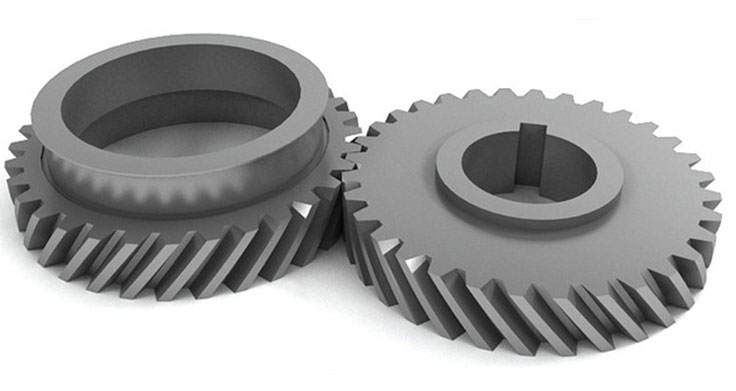Manufacturing helical gears requires precision and attention to detail to ensure their optimal performance. Several techniques and considerations are involved in the manufacturing process of helical gears. Here are some key aspects to consider:

1. Gear Design and Engineering:
- The first step in manufacturing helical gears is the gear design and engineering. This includes determining the gear specifications, such as the number of teeth, module, pressure angle, helix angle, and tooth profile. Computer-aided design (CAD) software is often used to create accurate gear models.
2. Gear Cutting Methods:
- The most common methods for cutting helical gears are hobbing and shaping:
- Hobbing: Hobbing is a highly efficient and widely used method for producing helical gears. It involves using a hob, a special cutting tool, to generate the gear teeth gradually. The gear blank and hob rotate simultaneously, and the hob’s axial movement generates the helical teeth.
- Shaping: Shaping involves using a shaping cutter to create individual gear teeth on the gear blank. The gear blank and cutter reciprocate, and the gear teeth are generated one by one.
3. Tooling and Cutting Tools:
- High-quality cutting tools are crucial for achieving precise gear tooth profiles. Specialized hobs, shaping cutters, and gear shaving tools are used to ensure accurate gear geometry. The selection of the appropriate cutting tool material and coating can enhance tool life and machining efficiency.
4. Helix Angle Adjustment:
- The helix angle of helical gears is essential for their proper functioning. During the manufacturing process, the helix angle needs to be precisely adjusted to achieve the desired gear performance. This is particularly important when using hobbing machines or shaping cutters.
5. Gear Grinding and Finishing:
- After the gear cutting process, gear grinding and finishing may be employed to further improve the gear tooth profile accuracy and surface finish. Gear grinding ensures precise tooth dimensions, and gear honing or lapping enhances the gear surface quality.
6. Heat Treatment:
- Heat treatment is an essential step in the manufacturing process to enhance the gear’s mechanical properties and ensure its durability. Through processes like carburizing, quenching, and tempering, the gear’s surface hardness and core strength can be optimized.
7. Gear Inspection and Quality Control:
- Comprehensive inspection and quality control measures are essential to ensure that the manufactured helical gears meet the required specifications and standards. Techniques such as coordinate measuring machines (CMMs) and gear testers are used to verify the gear’s accuracy, tooth profile, and dimensional precision.
8. Material Selection:
- Choosing the right material for the helical gears is crucial for their performance and longevity. Common materials used for helical gears include alloy steels, tool steels, and case-hardening steels, depending on the application requirements.
9. Lubrication and Maintenance:
- Proper lubrication of helical gears is essential to minimize friction and wear during operation. Considering the gear’s working conditions and selecting suitable lubricants contribute to the gears’ efficiency and reliability. Regular maintenance and inspections help to identify and address any potential issues early on.
Manufacturing helical gears is a complex process that demands precision and expertise. Taking into account the design, cutting methods, heat treatment, and inspection processes, manufacturers can produce high-quality helical gears that meet the stringent requirements of various industries.
